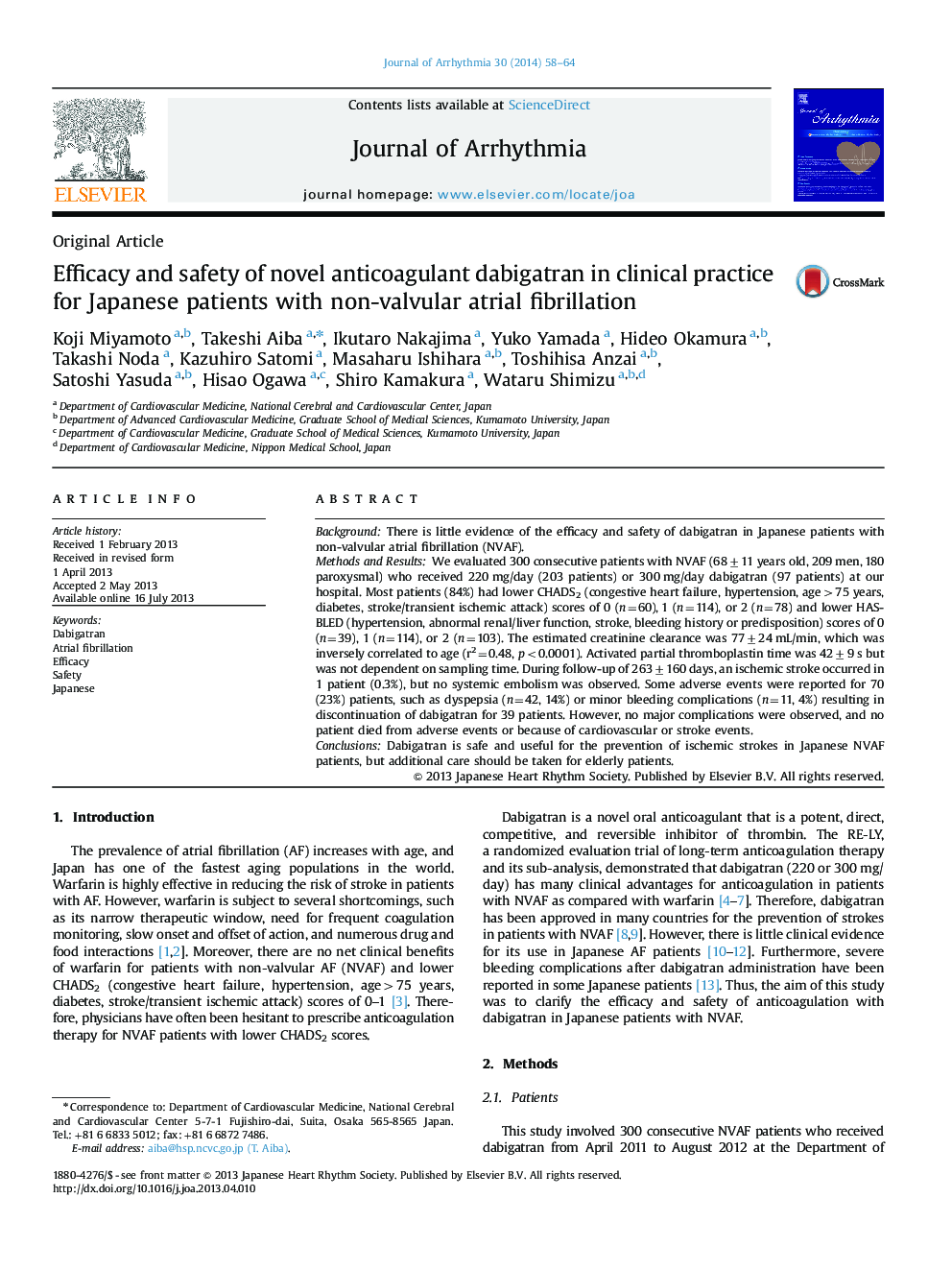| Article ID | Journal | Published Year | Pages | File Type |
|---|---|---|---|---|
| 2957788 | Journal of Arrhythmia | 2014 | 7 Pages |
BackgroundThere is little evidence of the efficacy and safety of dabigatran in Japanese patients with non-valvular atrial fibrillation (NVAF).Methods and ResultsWe evaluated 300 consecutive patients with NVAF (68±11 years old, 209 men, 180 paroxysmal) who received 220 mg/day (203 patients) or 300 mg/day dabigatran (97 patients) at our hospital. Most patients (84%) had lower CHADS2 (congestive heart failure, hypertension, age>75 years, diabetes, stroke/transient ischemic attack) scores of 0 (n=60), 1 (n=114), or 2 (n=78) and lower HAS-BLED (hypertension, abnormal renal/liver function, stroke, bleeding history or predisposition) scores of 0 (n=39), 1 (n=114), or 2 (n=103). The estimated creatinine clearance was 77±24 mL/min, which was inversely correlated to age (r2=0.48, p<0.0001). Activated partial thromboplastin time was 42±9 s but was not dependent on sampling time. During follow-up of 263±160 days, an ischemic stroke occurred in 1 patient (0.3%), but no systemic embolism was observed. Some adverse events were reported for 70 (23%) patients, such as dyspepsia (n=42, 14%) or minor bleeding complications (n=11, 4%) resulting in discontinuation of dabigatran for 39 patients. However, no major complications were observed, and no patient died from adverse events or because of cardiovascular or stroke events.ConclusionsDabigatran is safe and useful for the prevention of ischemic strokes in Japanese NVAF patients, but additional care should be taken for elderly patients.
